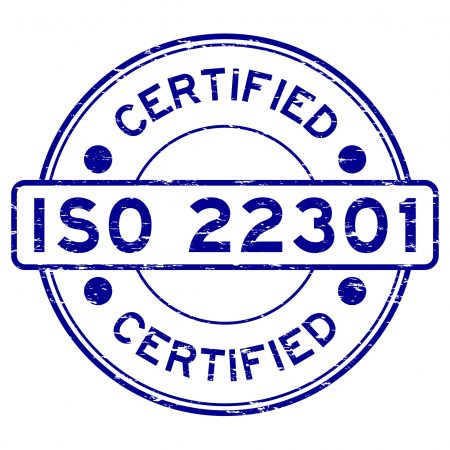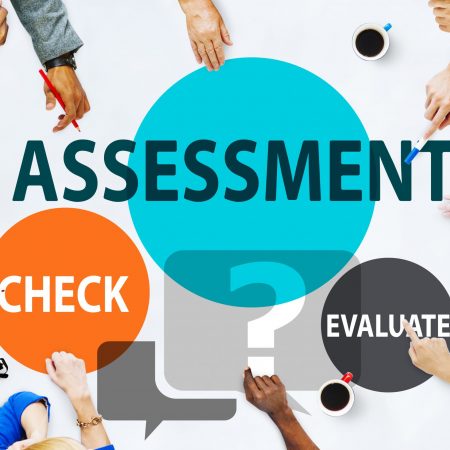Business Continuity
XGenA believes that the worldwide digital revolution will increase the need for BC
Organizations have been vulnerable to crises for a long time due to the unpredictability of economic, technological, and human factors. In addition
Greater digitalization leads to greater resilience.

ISO22301 Certification Support Services
ISO22301 Certification Support Services

Crisis Management Services
Crisis Management Services

BC Exercise and Testing
BC Exercise and Testing

BCMS Audit services
BCMS Audit services

BCMS Assessment services
BCMS Assessment services

E2E/Modular BCMS Implementation
E2E/Modular BCMS Implementation
Business Continuity (BC) is Capability of an organization to continue the delivery of products and services within acceptable timeframes at predefined capacity during a disruption.
Source ISO22301
A BCMS's objective is to plan for, establish, and maintain controls and capabilities for managing an organization's overall ability to operate during disruptions. And there is number of benefits will be occurred:-
- Supports strategic objectives
- Improves capability to remain effective during disruption
- Reduces legal and financial exposure
- Protects and enhances reputation and credibility
- Creates competitive advantage
- Providing confidence in the organization’s ability to succeed
- Protecting life, property and environment
- Reduce costs of disruptions
The XGenA team is of the viewpoint that a business continuity management system is essential for all businesses, no matter how big or small (BCMS).
In addition, XGenA believes that a BCMS should be implemented and ingrained at all levels of the organization, that it should take a Top-Down approach by obtaining the support of top managers, and that it should be followed by the provision of adequate resources and the development of appropriate capabilities. In addition, a Bottom-Up approach should be taken when developing a BCMS so that each member of the organization is aware of the specific responsibilities that fall on his shoulders in the event of a crisis
In implementing BCMS with our client, XGenA employs a tried-and-true methodology.
This methodology is based on the ISO 22301 international standard and also on good practice guidelines related to the BCI organization.
XGenA methodology has already been tested and is based on best practices in various industries
Disaster Recovery
Failures in ICT services, including security issues such as system intrusion and malware infections,
will have an impact on business operations. Thus, managing ICT and related continuity, as well as other security aspects, is an important part of meeting business continuity requirements. Furthermore, in most cases, critical business functions that require business continuity are heavily reliant on ICT. Because of this reliance, disruptions in ICT can pose strategic risks to the organization’s reputation and ability to operate.

ICT Readiness for Business Continuity (IRBC) Implementation
ICT Readiness for Business Continuity (IRBC) Implementation

DR Assessment services
DR Assessment services

DR Infrastructure Architecture services
DR Infrastructure Architecture services

DR Drills
DR Drills
Disaster Recovery (DR) is ability of the ICT elements of an organization to support its critical business functions to an acceptable level within a predetermined period of time following a disruption .
Source ISO27031
To have effective business continuity management (BCM), you need to have effective information and communication technology (ICT) readiness. This will ensure that the organization's goals can still be met despite any disruptions. This is particularly important given that the effects of disruptions to information and communications technology (ICT) often have the added complication of being difficult or impossible to detect.
XGenA believe DR program needs to be a process that is fully integrated with the activities of the organization's management, that is driven from the top of the organization, and that is endorsed and promoted by top management for it to be effective. It's possible that in order to support and manage the DR program, you'll need a number of professional ITDR practitioners as well as staff from various other management disciplines and departments. The magnitude of the organization's complexity, in addition to its size, will be a determining factor in the quantity of resources that will be necessary to support such a program.
ICT Readiness for Business Continuity (IRBC) requires a systematic process to prevent, predict, and manage ICT disruption and incidents that could disrupt ICT services. ICT IRBC's management system should use the Plan-Do-Check-Act (PDCA) cycle. IRBC supports BCM by ensuring that ICT services are resilient and can be recovered to pre-determined levels within the organization's timeframes..
Risk Assessment
Risk assessment is a critical element of successful business management.
Managers and supervisors must be proactive in identifying risks and, more importantly, taking action to address them. It is a far more efficient and cost-effective approach to risk management than simply responding to incidents as they occur. Risk assessments can identify weaknesses and, when implemented, result in a safer, healthier, and more productive workforce. XGenA always believes “Risk assessment is successful management practice”.
The term risk assessment refers to the overall process or method by which you:
- Determine the hazards and risk factors that may cause harm (hazard identification).
- Analyze and assess the danger associated with that hazard (risk analysis, and risk evaluation).
- Determine appropriate methods for removing the hazard or controlling the risk if the hazard cannot be removed (risk control).
To ensure a successful business it is crucial to conduct regular risk assessments. These aid in:
Increase people's sensitivity to potential dangers.
It's important to find out who might be in danger (e.g., employees, IT infrastructure, Facilities, Supplier, Cybersecurity, etc.).
Find out if the current preventative measures are sufficient or if more needs to be done.
Risks and preventative measures must be prioritized.
Comply by the rules and regulations set out by the law.
XGenA is of the opinion that every employee in the organization should be informed of the dangers associated with the activities and functions to which they are assigned. However, there are typically several key stakeholders participating in the risk assessment process, including the following: (e.g., manager, supervisors, workers, worker representatives, suppliers, etc.).
XGenA use a proven methodology to implement risk assessment based on ISO31000 international standards and beast practice as well
In general, to do an assessment, you should: Identify hazards.
Determine the likelihood of harm, such as an injury or illness occurring, and its severity.
Understand the minimum legislated requirements for your jurisdiction.
Identify actions necessary to eliminate the hazard or control the risk using the hierarchy of risk control methods.
Evaluate to confirm if the hazard has been eliminated or if the risk is appropriately controlled.
IT Capacity Planning
In a global survey of senior executives, conducted by The Economist Intelligence Unit and sponsored by Appian
four out of five respondents (83%) said that, based on their pandemic experiences, they believe that considerable or moderate improvements are needed to their organization’s IT infrastructure and applications in order to better adapt to external change. Employee working habits and customer buying behaviors have shifted significantly during the pandemic—in many cases, irreversibly—so a permanent uptick in the use of digital channels will need to inform future business and IT strategy. XGenA team believes in technology revolution in order to disrupt IT infrastructure.

Outsourcing advisory
Outsourcing advisory

Professional Services
Professional Services
IT Capacity planning is the process of predicting and forecasting the need for IT infrastructure resources by collecting the capacity of the current environment and using tools to measure it against future requirements.
Source ITIL frameworks
Capacity management is the broad term describing a variety of IT monitoring, administration and planning actions that are taken to ensure that a computing infrastructure has adequate resources to handle current data processing requirements as well as the capacity to accommodate future loads. There are benefits like:
- Plan future capacity needs with capacity forecasting based on historical trends of business & infrastructure metrics.
- Strike the right balance between performance risk due to under-provisioned capacity and over-provisioned capacity that balloons your infrastructure costs.
Efficiently detect performance issues in physical, virtual, and cloud environments and drill down to troubleshoot guest virtual machine performance issues in real time
The XGenA team is of the viewpoint that IT capacity planning is essential for all businesses, no matter how big or small.
More than that The XGenA team is qualified to help our customer to implement their IT capacity plan using the best practices frameworks using ITIL V4 in order to disrupt IT infrastructure and plan future capacity needed to strike the right balance between performance risk due to under provisioned capacity and over provisioned one. In addition to that XGenA team uses capacity planning tools to detect performance issues in physical, virtual and cloud environments.
XGenA combines the lead and lag capacity planning approaches. In this instance, project managers must monitor actual demand, demand planning estimates, and market developments to modify capacity
XGenA methodology has already been tested and is based on best practices in various industries
Cyber Security
Organizations that suffer cyber security breaches may face significant fines.
There are also non-financial costs to be considered, like reputational damage. Cyber attacks continue to grow in sophistication, with attackers using an ever-expanding variety of tactics. These include social engineering, malware and ransomware. New regulations and reporting requirements make cyber security risk oversight a challenge. The board needs assurance from management that its cyber risk strategies will reduce the risk of attacks and limit financial and operational impacts.

Secure Software Development
Secure Software Development

Vulnerability Assessment & Penetration Testing
Vulnerability Assessment & Penetration Testing

Cyber Solutions & Design Review
Cyber Solutions & Design Review

GRC Support
GRC Support
Cyber security is the application of technologies, processes, and controls to protect systems, networks, programs, devices and data from cyber attacks. It aims to reduce the risk of cyber attacks and protect against the unauthorized exploitation of systems, networks, and technologies.
It is a mistake to believe that you are of no interest to cyber attackers. Everyone who is connected to the Internet needs cyber security. This is because most cyber attacks are automated and aim to exploit common vulnerabilities rather than specific websites or organizations
96% of organizations were targeted by an email-related phishing attempt. While phishing is the most common email-borne threat, data leaks and business email compromise attacks are not far behind: More than 9 out of 10 respondents acknowledge that their organization has been subjected to these type of incursions.
75% Ransomware has attacked three out of four organizations worldwide. This is up from 61% in last year's survey. Additionally, when faced with a ransomware attack, 64% of companies paid the ransom, yet nearly 4 out of 10 of them failed to recover their data.
The XGenA team is of the viewpoint that CS standards and controls are essential for all businesses, no matter how big or small
More than that The XGenA team is qualified to help our customer to implement their cyber security using the best practices frameworks using NIST framework, ISO 27001, PCI, and CIS controls for OT cyber security in order to secure IT infrastructure and applications. In addition to that XGenA team uses CS tools to scan, analyze and monitor Customers data and business against any malicious or cyber attack
XGenA team of certified professionals is customer-oriented, with extensive technical and business expertise. A highly qualified team, with a broad experience with different industry requirements
XGenA methodology has already been tested and is based on best practices using CS frameworks
Training & Managed Services
Training leads to better processes and business growth. In today’s ever-changing marketplace
the importance of job training has never been greater. Workforce training is an indispensable way to keep your organization competitive. Employees are human, most will have weaknesses or gaps in their professional skills. Furthermore, most professional people are specialists of one kind or another. Much of what goes on in your organization is likely to fall outside of the training each individual worker already has.

Managed Services
Managed Services

Information Security
Information Security

Cyber Security
Cyber Security

Continuity, Resilience, And Recovery
Continuity, Resilience, And Recovery

Governance, Risk, And Compliance
Governance, Risk, And Compliance

Privacy And Data Protection
Privacy And Data Protection
Training supplies employers Having a high quality and comprehensive employee training development program enables you to strengthen the skills your workforce does possess as well as to build up knowledge where it is lacking. An employee training development program will bring all of your staff up to a higher standard of competency so that your entire team can share a common set of knowledge and skills. Such a program will repair any weak links that may exist in your organization and cause the workload to be more evenly spread among your workers.
By providing ongoing workforce training, you will enable one employee to pick up where another left off, keeping them all on the same page without having to provide constant help and supervision. The importance of employee training to an organization should never be underestimated. In addition to ongoing training can be thought of as the best insurance policy against all sorts of the inevitable changes and the unforeseeable needs that will arise in your organization from time to time.
The benefits of training on an ongoing basis also includes the maintenance of team cohesion, the creation of a common mindset and a shared vocabulary. As with learning, in general, the benefits of training your team are a challenge to enumerate. There are, however, several clear benefits.
The XGenA team is of the viewpoint that training and employees development are essential for all businesses, no matter how big or small.
More than that The XGenA team is qualified to provide our customer to develop their workforce by training and development the technical and skills of their employees using the highest institutes in various technology standards . In addition to that XGenA team uses their qualified tools and expertise to implement the required standards and ISO certificates to qualify customers’ organizations
XGenA team of certified professionals is customer-oriented, with extensive technical and business expertise. A highly qualified team, with a broad experience with different industry requirements
XGenA methodology has already been tested and is based on best practices using international frameworks.





